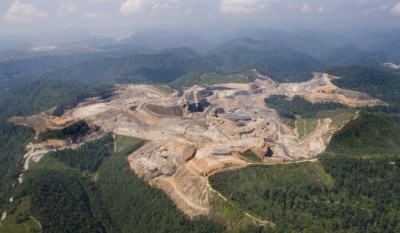As American citizens in Mingo County and other areas of the flood-stricken Kentucky and West Virginia coalfields continue to dig themselves out of the muck, indefatigable Charleston Gazette reporter Ken Ward is reporting on his Coal Tattoo blog that the EPA has “signed off on almost all (87.5 percent, to be exact) of the mountaintop removal permits that has so far been reviewed under the initiative announced in March.”
Ward has just posted a letter dated yesterday from the EPA to US Rep. Nick Rahall (D-WV), announcing that:
EPA has raised environmental concerns with six pending permit applications in the Corps’ Huntington District out of a total of approximately forty-eight we have reviewed. We have advised the Corps that EPA does not intend to provide additional comments on the remaining forty-two permits. The Corps may proceed with appropriate permit decisions on those remaining projects.
Read that line again: Have 42 out of 48 permits for mountaintop removal–the process of blowing up our nation’s oldest and most diverse mountains, razing historic communities, poisoning watersheds, and causing massive erosion and flooding, which Vice President Al Gore has termed “a crime, and ought to be treated as a crime”–been cleared as “environmentally responsible” by the Obama administration’s EPA?
Since President Barack Obama has taken office, an estimated 300 million pounds of ammonium nitrate/fuel oil explosives have been detonated across our American mountains.
In effect: Residents in the mountaintop removal areas have been subjected to a kind of waterboarding environmental policies. All well-meaning intentions aside, an indubitable fact remains: Mountaintop removal is an immoral crime against nature and our citizenry, a human rights violation, and it must be abolished, not regulated.
The EPA’s letter to Rahall is a curious document. Acting Assistant Administrator Michael H. Shapiro writes:
I understand the importance of coal mining in Appalachia for jobs, the economy and meeting the nation’s energy needs. I also want to emphasize the need to ensure that coal mining is conducted in a manner that is fully consistent with the requirements of the [Clean Water Act], the Surface Mining Control and Reclamation Act, the National Environmental Policy Act, and other applicable federal laws.
If Mr. Shapiro has never been to a mountaintop removal site–among the 500 mountains and 1.2 million acres of hardwood forests that have been erased from our American maps–then he needs to visit now and witness first-hand the failure of our mountaintop removal regulations.
“When Congress passed the Surface Mining Control and Reclamation Act in 1977,” testified Joe Lovett, the Executive Director of the Appalachian Center for the Economy and the Environment, at an Oversight Hearing of the US House Committee on Natural Resource on the 30th anniversary of the SMCRA, “it thought that it was enacting a law to protect the environment and citizens of the region. OSM has used, and has allowed the states to use, the Act as a perverse tool to justify the very harm that Congress sought to prevent. The Members of Congress who voted to pass the Act in 1977 could not have imagined the cumulative destruction that would be visited on our region by the complete failure of the regulators to enforce the Act.”
For more information on today’s breaking news, or flooding, see Ward’s Coal Tattoo blog.
In the meantime, here’s Goldman Prize winner Maria Gunnoe describing how it feels to be flooded out numerous time in the past few years, after mountaintop removal operations altered the natural valleys and terrain:
And here’s a clip from the recent flooding in Mingo County, which residents attribute to strip mining erosion along the nearby ridges and mountains. Not that we will ever know the true impact of mountaintop removal and strip mining on flooding–as Ward reported in 2001, the WV’s Department of Environmental Protection has actually gone to court to resist “efforts to require coal operators to study stream flows more extensively to help pinpoint each strip mine’s impact on flooding.”



